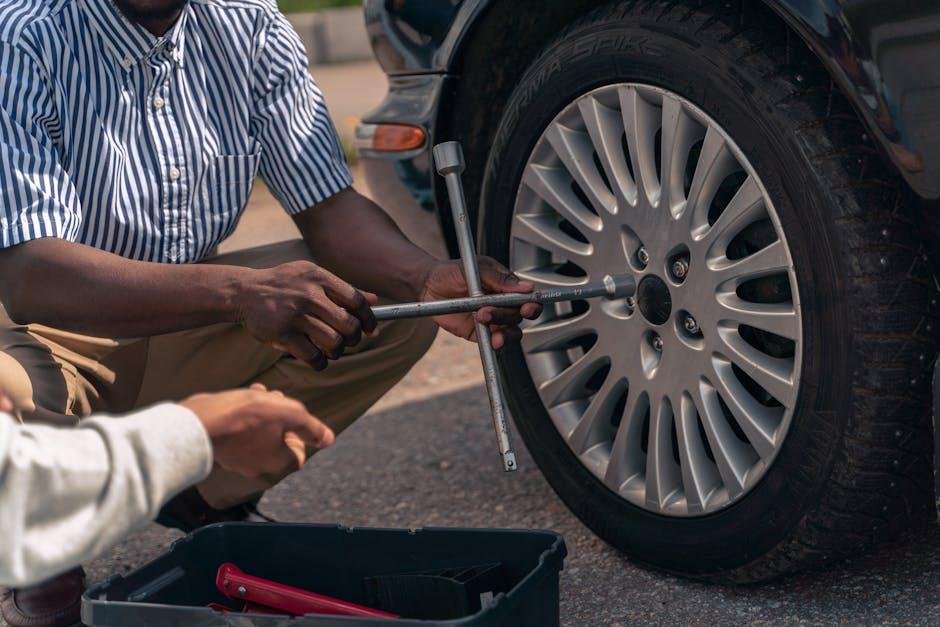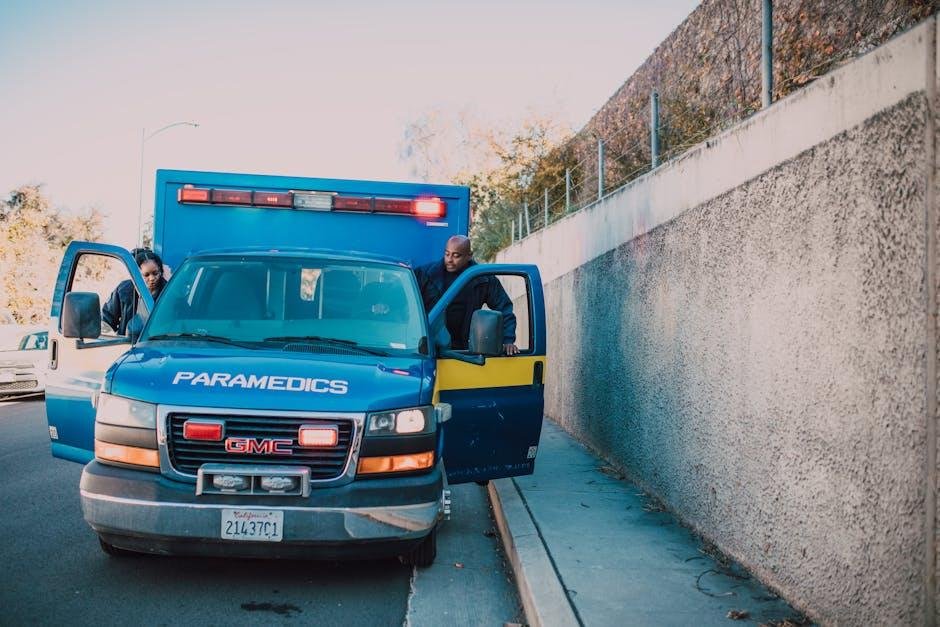Imagine a serene road trip, the kind where the sun paints the horizon and your favorite playlist resonates through the car. Suddenly, the world comes to a halt — a flat tire, an empty gas tank, or perhaps a stubborn engine that refuses to cooperate. In moments like these, the concept of roadside assistance emerges as a safety net, transforming chaos into convenience. But what exactly is roadside assistance, and does everyone truly need it? In this article, we’ll delve into the ins and outs of this invaluable service, exploring its benefits, limitations, and whether it deserves a spot in your travel toolkit. Whether you’re a seasoned traveler or a casual commuter, understanding the role of roadside assistance could be the key to a smoother ride.
Understanding Roadside Assistance and Its Benefits
Roadside assistance services offer peace of mind when you’re on the road, acting as a safety net for unexpected vehicle troubles. When your car breaks down, runs out of fuel, or you find yourself locked out, having a roadside assistance plan can be a lifesaver. Benefits of this service include expert help, rapid response times, and coverage in various situations. With just a quick call, professionals can come to your aid, helping you get back on your way without the stress of figuring out what to do next. This convenience is particularly valuable for those who travel frequently enough or for families who want to ensure safety during road trips.
Moreover,many roadside assistance plans come with additional perks that can enhance your overall driving experience. As an example, they may provide services such as tire changes, jump-starts for dead batteries, and even minor mechanical repairs. Keeping these services in mind can prevent minor inconveniences from turning into major headaches. Hear’s a quick overview of the common offerings:
| Service Type | Details |
|---|---|
| Tire Change | Quick replacement if you have a spare. |
| Fuel Delivery | Get enough fuel to reach the nearest station. |
| Lockout Assistance | Help unlocking your vehicle if you are locked out. |
| Winching | Assistance if your vehicle is stuck in mud or snow. |
Choosing the right roadside assistance service can greatly enhance your driving experience and safety. Think about how frequently enough you drive and what types of emergencies are most likely to occur in your area. Investing in a reliable roadside assistance plan can not only save you time and money but also alleviate worries about unexpected car troubles, allowing you to enjoy the open road with confidence.

Common Situations Where Roadside Assistance Can Help
when you’re cruising down the highway or navigating city streets, unexpected incidents can easily turn a smooth drive into a stressful experience. roadside assistance is your safety net in such situations, ensuring you never have to face breakdowns alone. Common scenarios where roadside assistance can be invaluable include:
- Flat tires: Getting a flat can be both perilous and inconvenient,but with roadside assistance,help is just a call away.
- Dead battery: If your vehicle won’t start due to a dead battery, services will quickly jumpstart it, letting you get back on the road.
- Running out of fuel: Miscalculating your fuel tank can lead to unexpected stops; roadside assistance can bring you enough fuel to reach the nearest gas station.
- Locked out of your car: Losing your keys or locking them inside the vehicle is a hassle, but a roadside assistance service can help you regain access to your vehicle.
When considering the practicality of roadside assistance, it’s essential to weigh the benefits of having immediate support versus the potential costs and inconvenience of handling issues on your own.Here’s a quick comparison of situations where this service proves particularly beneficial:
| Situation | Time to Resolve | DIY Difficulty |
|---|---|---|
| Flat tire | 15-30 mins | Moderate |
| Battery dead | 30 mins | high |
| Out of fuel | 30-60 mins | Low |
| Locked out | 30 mins | High |

how to Choose the Right Roadside Assistance Plan
Choosing the right roadside assistance plan involves assessing your individual needs and understanding the coverage options available. Begin by evaluating your driving habits: do you often travel long distances,or is your driving primarily local? Consider whether you frequently drive alone or with family,as this could affect how comprehensive the coverage should be. A plan with towing services, fuel delivery, and flat tire assistance might be essential for someone who regularly ventures on road trips, while a basic plan could suffice for city commuters.
It’s also wise to compare various providers and their plans to find the best fit. Pay attention to the following factors: response time, service area, and annual cost. You can create a simple comparison table to help visualize these differences. Here’s a quick example:
| Provider | Annual Cost | Response Time | Coverage Area |
|---|---|---|---|
| Roadside Co. | $60 | 30 mins | Nationwide |
| Wheels Assistance | $50 | 20 mins | Regional |
| Emergency Help | $75 | 40 mins | Statewide |
In addition to these aspects, pay attention to any additional services that might interest you, such as trip interruption coverage, locksmith services, or vehicle rental discounts. By taking the time to assess your driving style and the particulars of each plan, you can ensure you select the roadside assistance that best fits your lifestyle and offers peace of mind on the road.

DIY Alternatives to Roadside Assistance: Are They Enough?
As more drivers seek ways to save money while ensuring their safety on the road, many are turning to DIY alternatives to traditional roadside assistance programs. These alternatives can be effective for handling common issues such as flat tires, dead batteries, or running out of fuel. However, it’s essential to ensure that these solutions are adequate for your specific needs.Here are a few popular options to consider:
- Tire Repair Kits: Portable kits can help you fix flat tires without a spare.
- Jump Starter Packs: These provide a reliable way to start a dead battery without needing another vehicle.
- Emergency Tool Kits: These kits usually include basic tools that can help in minor repairs or adjustments.
- Mobile Apps: many apps connect you to local mechanics or services that can assist when you’re in a pinch.
While these DIY solutions can be convenient and cost-effective, they do come with certain limitations. For instance, they require you to have the knowledge and skills necessary to make effective use of the tools or kits at hand. Additionally, situations like severe weather, accidents, or major mechanical failures can leave even the best-prepared drivers feeling vulnerable. Here’s a quick overview of what these alternatives might lack when compared to professional services:
| Feature | DIY Alternatives | Roadside Assistance |
|---|---|---|
| 24/7 Availability | No | Yes |
| Expert Assistance | Limited | Expert Technicians |
| Coverage for Major Issues | No | Yes |
| Convenience | Dependent on driver skills | Immediate Help |
insights and Conclusions
As we navigate the unpredictability of the open road, it’s essential to ponder the benefits of having a safety net beneath us. Roadside assistance serves as a silent guardian, ready to spring into action when unexpected troubles arise. Whether you frequently embark on long journeys, manage a busy commuting schedule, or simply wish to add an extra layer of peace of mind to your daily travels, evaluating your specific needs is crucial.
choosing to invest in roadside assistance is about more then just having a tow truck on speed dial; it’s about cultivating confidence in your journey, knowing that help is just a call away. So, as you assess your driving habits and consider the unpredictable nature of the road ahead, ask yourself: is the reassurance of roadside assistance the right choice for you? Your adventure awaits—ensure that you’re prepared for anything it might throw your way. Safe travels!


